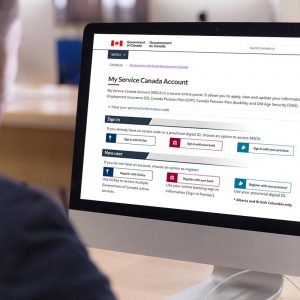Last Updated on January 20, 2024

Ontario’s graduated licensing program serves to assist novice drivers in mitigating risks and enhancing their driving skills. If you’re uncertain about obtaining a G1, G2, or G driver’s license in Ontario, don’t fret – the rules and limitations associated with the program can be somewhat intricate.
To attain full driver’s license status in Ontario, all drivers must complete the graduated licensing program, which necessitates taking both a knowledge exam and a set of road tests.
The Ultimate Guide to Graduated Licensing
If you’re a teenager seeking to obtain your beginner’s driver’s license or a parent who’s unsure about the prerequisites for your child to get a license, it’s crucial to understand the fundamentals of Ontario’s G licensing system. You’ll want to know the progression from G1 to G2 to a full G license.
This guide offers a comprehensive overview of Ontario’s graduated licensing program, covering the regulations, necessities, and constraints associated with G1, G2, and G driver’s licenses. You’ll also find answers to frequently asked questions.
About The Ontario Graduated Licensing System
Novice and youthful drivers are at a greater risk of causing accidents, as evidenced by their elevated driver fatality rate. To address this issue, Ontario’s graduated licensing program (GDL) was implemented.
The GDL program in Ontario facilitates the acquisition of crucial driving experience for young drivers over an extended period. It creates a safe space for novice and inexperienced drivers to cultivate their driving abilities and knowledge as they advance through the graduated licensing system. This system has been in place in Ontario since 1994.
What Is A Graduated Driver’s License?
The graduated driver’s license is a program implemented throughout Canada, including Ontario, to assist novice drivers in acquiring experience. Generally, these licenses entail three phases, namely the learner’s permit, the probationary license, and the full driver’s license.
Ontario Driver’s License Rules and Requirements to Drive
Any individual who operates a vehicle in Ontario must adhere to a few fundamental requirements:
- Driver’s License: You must carry a valid driver’s license with you at all times.
- Valid Permit And Plate: The vehicle you’re driving must possess current permit and license plates.
- Insurance Coverage: The vehicle must have adequate Ontario car insurance coverage and liability card.
For full details please Ontario Graduated Licensing go to the Ontario Government website.
How Do You Apply for An Ontario Driver’s License?
To apply for a driver’s license in Ontario, all drivers must fulfill three requirements, namely:
- Being at least 16 years old.
- Passing an eye examination.
- Passing a written test that assesses your knowledge of traffic signs and rules of the road.
You may submit an application for a driver’s license at any Drive Test center. Find a Drive Test centre.
What Documentation Do I Need to Apply for A Driver’s License in Ontario?
To submit an application, you must furnish proof of identification. The document must exhibit your legal name and date of birth. Acceptable forms of identification include:
- Passport (Canadian or foreign).
- Canadian Citizenship Card with photo.
- Secure Certificate of Indian Status Card (issued on or after December 15, 2009 by Indian and Northern Affairs Canada).
- Ontario Photo Card.
- Permanent Resident (PR) Card.
- Other documents may also be accepted.
Ontario’s G License System Has 3 Levels
In Ontario, to operate a vehicle with a full G license, all drivers must fulfill the necessities at each driving stage, from G1 to G2 until attaining the complete G license.
Consequently, Ontario’s driver training and licensing system is known as a graduated licensing program, where one must progress from one level to the next.
Ontario Driver’s License G Classes
The graduated driver’s license system in Ontario has three classes of licensing :
- G1 license
- G2 license
- Full G license
The G1 License
About The G1 License Rules in Ontario
For many people, obtaining their G1 license is a significant accomplishment. It also marks the initial stage in Ontario’s graduated drivers licensing system, which is the first step toward becoming a fully licensed driver.
The G1 license serves as the beginner’s license or learner’s permit in Ontario and is the first of three driver’s licenses to complete the graduated licensing system.
To apply, you must be at least 16 years old and pass an eye and written test regarding the road rules and traffic signs.
G1 drivers are subjected to a series of driving restrictions and rules to minimize risk and accidents, which aids novice drivers in learning to drive in a more controlled setting.
G1 Restrictions
What Are The G1 Driving Restrictions and Rules in Ontario?
As a new driver with a G1 license, there are several G1 road rules that you must follow to drive safely and effectively. These rules and restrictions are in place to help reduce risks and accidents on the road. The following G1 license restrictions apply to all drivers with a G1 license in Ontario:
- Accompanied by a full G licensed driver: You can only drive when accompanied by an experienced G license driver in the passenger seat. The accompanying driver must have held a full G license for at least 4 years and have a blood alcohol level of less than 0.05% if over 21. If under 21, they must have zero blood alcohol level.
- Zero alcohol: As the driver, you must have zero blood alcohol level at all times.
- No cannabis: You cannot have cannabis in your system while driving.
- Seatbelts: All passengers must wear seatbelts.
- No driving between 12 am – 5 am: As a G1 driver, you are not allowed to drive between midnight and 5 am.
- No driving on 400 highways: G1 drivers are prohibited from driving on 400-series highways or expressways including The Gardiner Expressway, Don Valley Parkway and The Queen Elizabeth Way (QEW).
- Vehicles: You can only drive G class vehicles such as cars, vans, and small trucks.
What If I Break The G1 Rules in Ontario?
If you violate the conditions of your G1 license, you will be held accountable and subject to the same rules of the road as any other driver in Ontario. This includes:
- Traffic ticket: You may be issued an Ontario traffic ticket and be subject to fines and penalties like fully licensed drivers.
- Demerit points: As a new driver, you can accumulate up to 9 demerit points before facing a license suspension. Fully licensed drivers have 15 demerit points.
- License suspension: Violating G1 conditions, such as having too many demerit points or committing a serious traffic violation, can lead to driver’s license suspension.
- Increased insurance costs: Breaking G1 rules may also impact your car insurance rates, as insurance companies consider your driving record and history from day one.
How Do You Get A G1 License?
Requirements to Become A G1 Driver
To obtain a G1 driver’s license, drivers must complete the following steps:
- Obtain the driver’s handbook: The handbook is available online or at a DriveTest location.
- Study for the knowledge test : Read the driver’s handbook thoroughly and take online G1 practice tests. When you’re ready, schedule the test.
- Pass the knowledge test: Visit a nearby DriveTest location to take the test.
- Pay the G1 license package fee: Pay the fees related to obtaining your G1 license.
- Congratulations, you are now a G1 driver!
G1 License Practice Period and Road Test
How Long Does It Take to Complete Your G1?
The G1 license requires a minimum practice period before you can take the G1 road test, which varies depending on whether you take driver’s training or not:
- 8 months with driver’s training: If you complete driver’s training at an MTO-approved driving school, you can take the G1 road test after 8 months from the date you passed your written test.
- 12 months without driver’s training: If you don’t take driver’s training, you must wait for 12 months after passing your written test before taking the G1 road test.
You can book and pay for your road test online. Note VISA debit is not accepted. You can also phone 1-888-570-6110 or 647-776-0331. This is an automated booking line. You can also go in-person to a DriveTest Centre. Most centres are open Monday – Friday from 9 am to 5 pm. Some are open on Saturday.
The G2 License
Getting A G2 License
Obtaining your G2 driver’s license marks your first opportunity to drive independently. Passing the G1 exit road test will allow you to drive unaccompanied, representing the second of three stages in the graduated licensing system in Ontario.
Before attempting the G2 exit road test, you must hold your G2 license for at least one year. Receiving your G2 license offers a sense of liberty, as you can drive alone with fewer driving limitations. Additionally, you can procure your own car insurance policy.
G2 Restrictions and Driving Rules
What Are The G2 Restrictions in Ontario?
- 12 month practice period: During the 12-month practice period with your G2 license, you can drive alone on any Ontario roads without an accompanying driver.
- Zero blood alcohol: As a G2 driver, you must maintain a blood alcohol level of zero at all times and ensure that all passengers in the vehicle wear their seatbelts
- All passengers must wear seatbelts: When driving with your G2 license, it is important to remember that you are not allowed to consume alcohol and all passengers in the vehicle must be secured with working seatbelts. Additionally, you may drive alone on any Ontario roads during the 12-month practice period.
What Are The Additional G2 Restrictions for Drivers 19 and Under?
If you have a G2 license and are 19 years old or younger, there are additional limitations you must follow concerning the number of passengers you can carry and when you can drive. Here are the specifics:
- Night driving restrictions for first 6 months: For the first six months, you must drive with only one passenger who is 19 or younger between midnight and 5 AM.
- Night driving restrictions after 6 months: After the first six months, you may drive with up to three passengers 19 or under between midnight and 5 AM.
- Night driving restrictions exceptions: These restrictions do not apply if you have a fully licensed driver with at least four years of driving experience in the car or if all passengers are immediate family members, such as a parent, brother, or sister.
What Happens If I Violate The G2 Restrictions in Ontario?
If you break the restrictions that come with your G2 license, you may face the following consequences:
- License suspension: Your license may be suspended for 30 days for your first violation.
- Demerit points: Any traffic conviction or violation will result in demerit points being added to your driving record.
- Traffic convictions and fines: You may be fined between $50 and $500 or more for violating traffic laws in Ontario.
- Increased insurance rates: A traffic ticket or license violation can result in an increase in your car insurance rates.
The Full G License
About Getting Your G License
Achieving the G license in Ontario marks the end of the graduated licensing process, and grants you the privilege of driving on all roads without any restrictions. Attaining this full license provides a sense of freedom, as you are no longer bound by the limitations of the earlier licensing stages.
In addition, it brings a sense of relief as you no longer have to worry about further road tests, and may also result in lower car insurance rates.
G License Restrictions
What Are Full G License Rules and Restrictions?
Ontario’s G class license restrictions differ significantly from the G1 and G2 licenses, as there are very few rules and driving restrictions to follow. However, G license holders are limited to driving only G class vehicles and are subject to a limit on their blood alcohol concentration.
- Vehicle limitations: You are only allowed to drive G class vehicles.
- Blood alcohol concentration (BAC) limits: You must not have more than 80mg of alcohol per 100ml of blood. If your BAC is between 50mg and 80mg, you are in the “warn range” and could face penalties such as a roadside suspension or immediate roadside prohibition.
- 21 years old or younger: If you are 21 years old or younger and have a G driver’s license, you must maintain a zero BAC while driving.
Class G License Tips
Obtaining your G license can provide a feeling of liberation and ease, but it is crucial to continue applying all the knowledge and skills acquired during the licensing process to drive safely and competently.
- Don’t develop bad habits: To remain a safe and effective driver, it’s important not to develop bad habits just because you’ve obtained your G license.
- Avoid distractions: Given the prevalence of distracted driving in Ontario, it’s crucial to avoid distractions while driving, especially as a new G license holder.
- Don’t drive if you’ve been drinking: With the recent changes to laws regarding alcohol and cannabis consumption for G license holders, it’s important to always abide by the impaired driving laws and refrain from driving if you’ve been drinking.
How Much Does A G License Cost?
The fee for obtaining a G driver’s license is $90, and it costs the same amount to renew your license after it expires. It’s worth noting that these prices are distinct from those associated with taking a G road test, which costs $91.25 per attempt. Keep in mind that costs are subject to change.
Why Is Graduated Licensing Important?
In Ontario, the graduated licensing system plays a crucial role in helping new drivers to develop their driving skills in a safe and controlled environment. This system enables G1 and G2 drivers to gradually acclimate to the challenges of driving and traffic conditions.
With the help of driver education, they can learn and practice essential driving skills, and as they gain more experience, they can drive more frequently and on busier roads. This system also helps to minimize the risks associated with driving by gradually exposing drivers to increasingly complex driving situations.
A List of The Benefits of Graduated Licensing
There are many benefits of having a graduated licensing system in Ontario :
- Develop skills and knowledge over time : Learning to drive safely and effectively takes time. Graduated licensing provides you with the time to develop your skills.
- Safer drivers : When you have proper training, you are more likely to be a safer driver.
- Reduce accidents : Graduated licensing helps to remove young drivers from situations where they are most likely to cause accidents.
- Situational awareness : New drivers can develop situational awareness. You learn how to deal with a variety of different driving conditions.
- Build confidence : Young drivers can build confidence and be more prepared to be a full licensed driver.
- Learn at your own pace : Some drivers need more time than others to develop their skills. It can take time to build confidence behind the wheel.
Your First Memorable Road Trip in Canada
After following and/or passing all these steps above, You are now one step closer to your First Memorable Road Trip in Canada.
Toronto to Niagara Falls Road Trip
There’s nothing quite like the excitement of embarking on your first road trip adventure, especially when it’s to one of the world’s most iconic natural wonders – Niagara Falls. As a newly licensed driver, the thrill of hitting the open road and exploring new destinations is a feeling like no other. From Mississauga (West of Toronto) to Niagara Falls, this trip promises breathtaking scenery, delicious food, and unforgettable memories. Join us as we follow a first-time road tripper on their journey to the mighty Niagara Falls, and discover the sights, sounds, and experiences that make this trip one for the books. Whether you’re an experienced traveler or a newcomer to the road trip game, there’s something for everyone on this unforgettable adventure.
So buckle up, hit the gas, and let’s dive into this unforgettable journey together!










